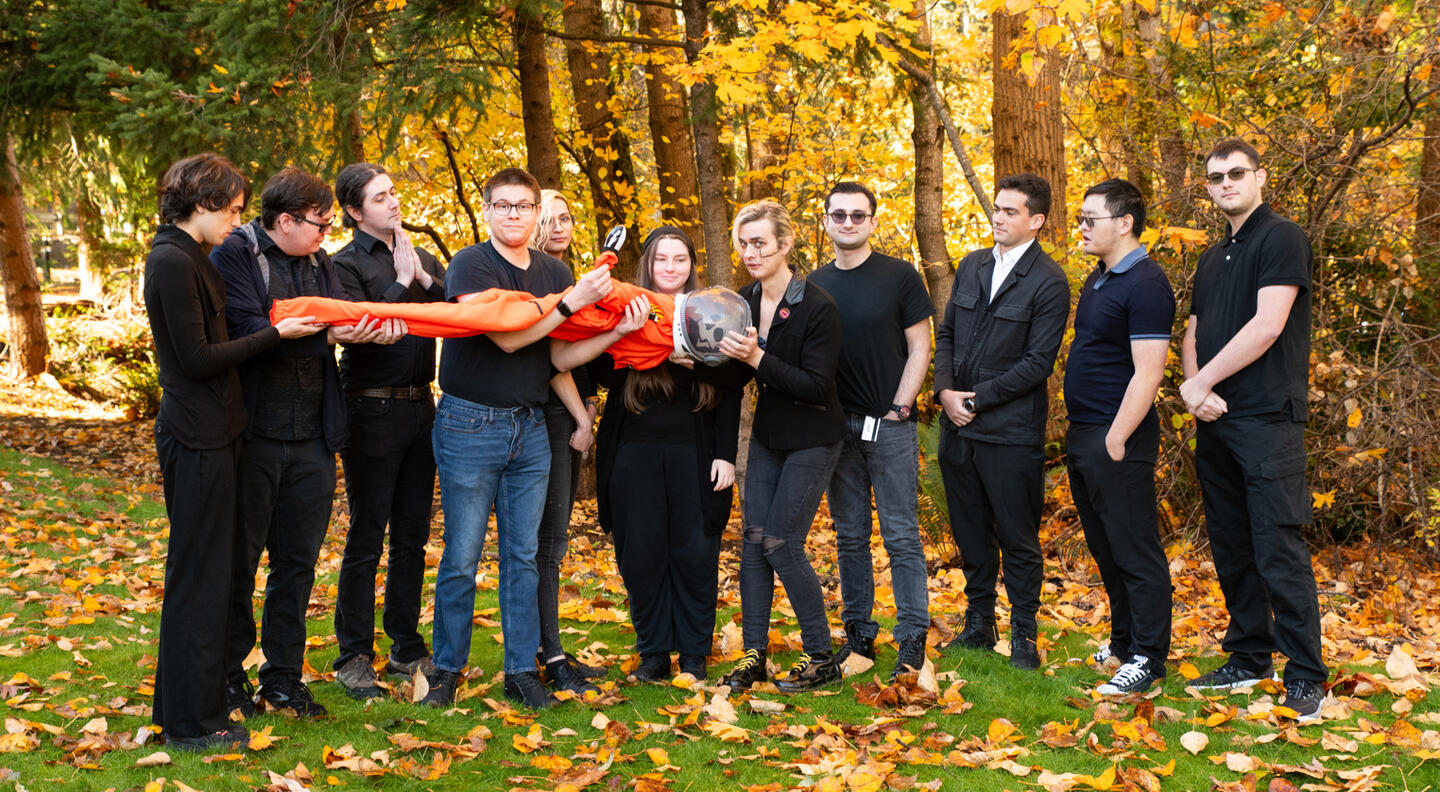InfeStation Contributions Portfolio
Design Lead, Level Designer
Developed over the span of 16 months.
Overview
I have been on the team from the very beginning. I wanted to work on some space-themed 3D game in Unreal Engine 5, so I gathered a few interested classmates. Fast-forward over a year later and here I am in the final stages of the project! Keep scrolling below to see my most significant contributions to the project.As Design Lead I made many behind-the-scenes contributions to the project ranging from making task lists, reviewing content from other team members, and having weekly leads meetings where I was responsible for catching up and directing the other departments on what we needed from them, and the feedback we were getting from playtests.
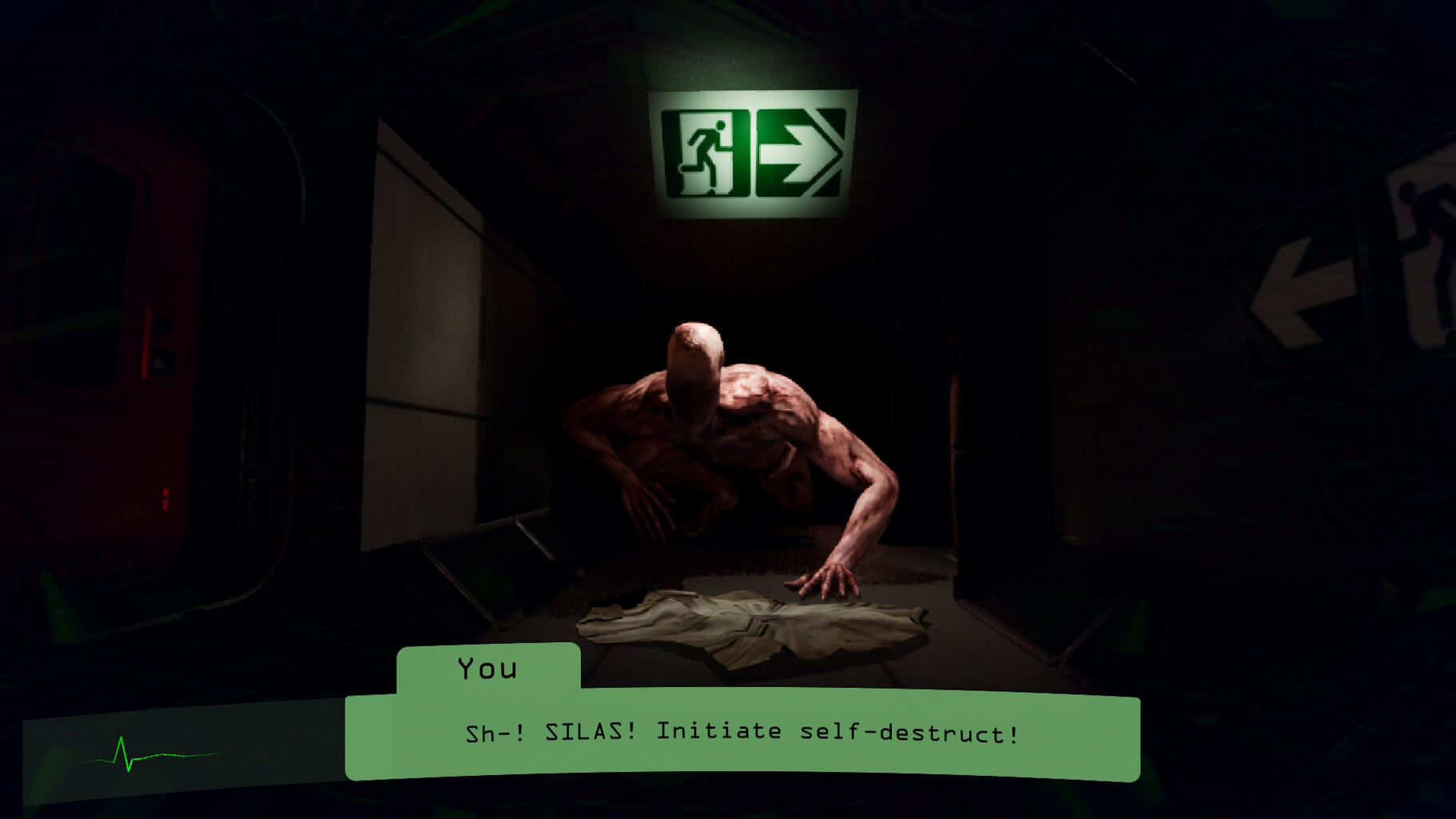
LVL_05: The Chase Sequence
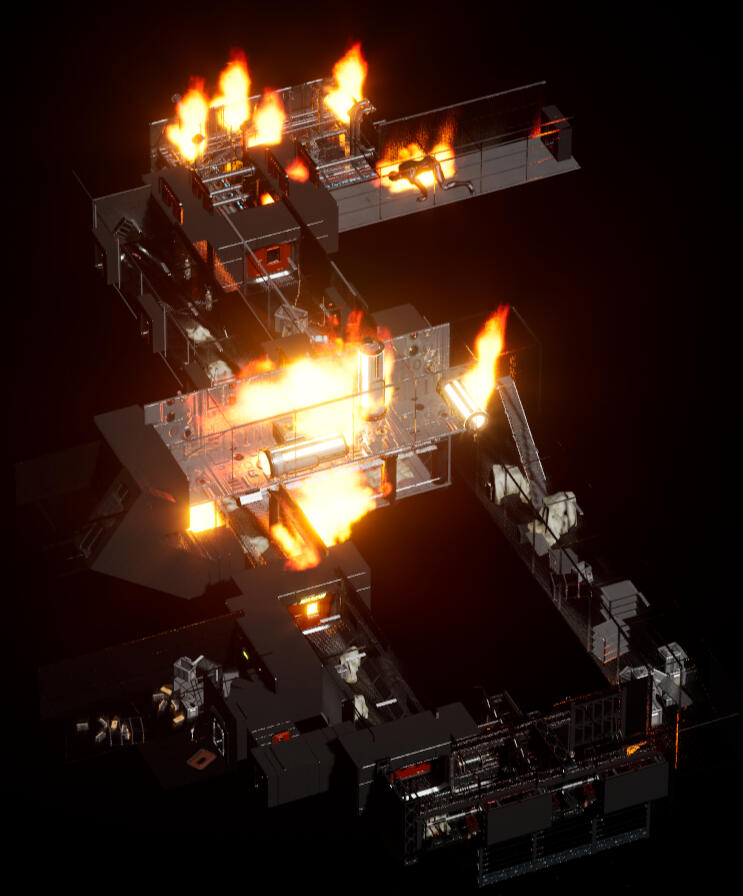
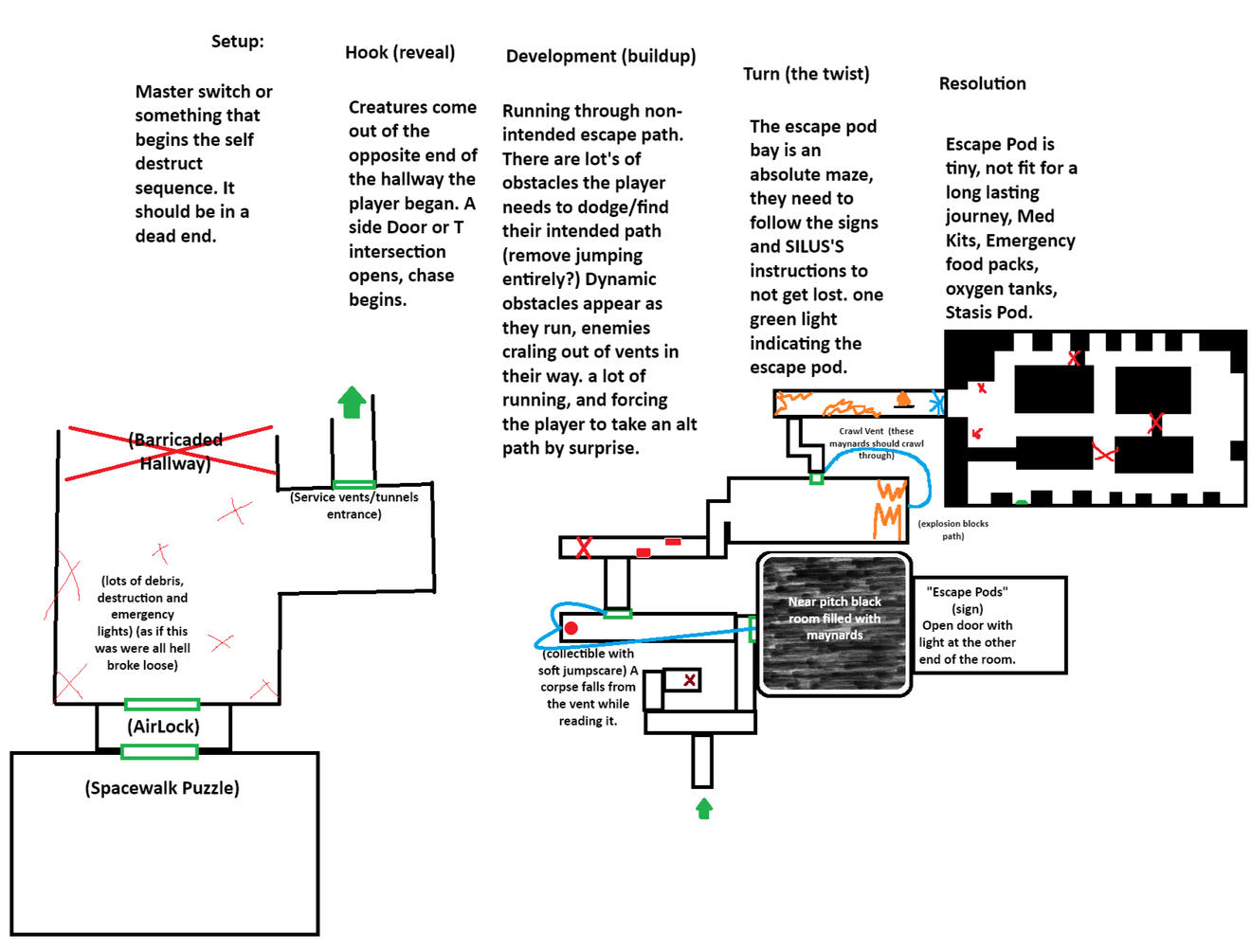
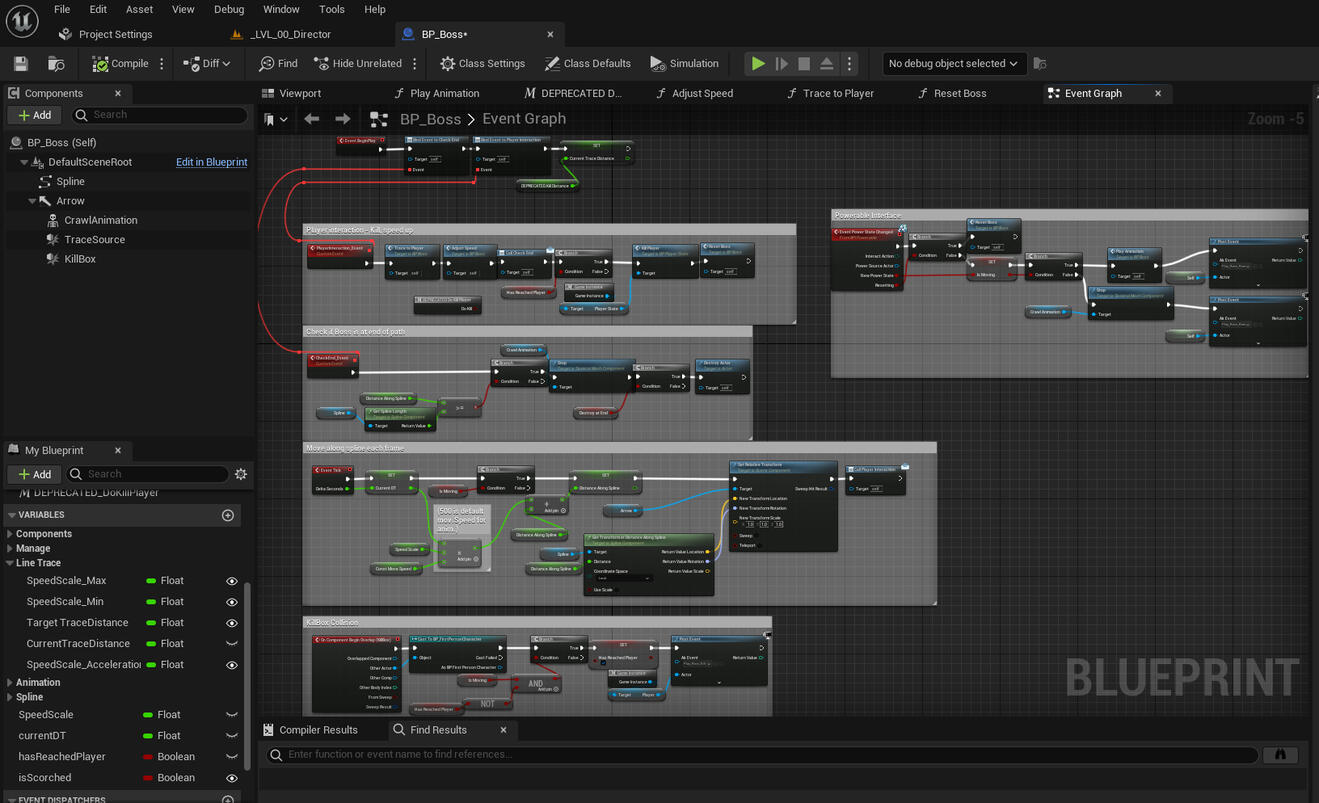
While my teammates worked on revising and redesigning other existing areas of the game, most of my level design work lies on the near end of the game. I made the new chase sequence from scratch this semester, and the team had decided a larger enemy would be more appropriate and reliable, so I made the whole sequence with this in mind. Since our tech team’s hands were full, I decided to implement most of the functionality of the Boss myself. I created the BPBoss and BPBoss_Scorched blueprints. I programmed them to follow the path of a spline placed by me while playing a looping crawling animation. Soon after the tech team modified the blueprint, so it was a powerable object, and lastly, I implemented the necessary proper reset functionality for it.The whole sequence went through a few passes, with a slow reveal of the large boss enemy, followed by a series of ups, downs, lefts and rights where the players attempt to outrun the boss while traversing a new straightforward space for the first time, while avoiding obstacles in the way. We couldn’t set the boss’s speed to a consistent value, it would always be too easy or too hard for some players, so I also implemented tethering to the boss blueprint! It’s all parameterized but essentially the boss can accelerate and decelerate depending on how far they are from the player, and I was able to tweak the values easily between playtests since none of it was hardcoded.I wanted the chase sequence to have a sense of false security, so I broke it up into two sequences, one where the boss falsely dies in a room filled with flames, but later re-appears scorched and angry very close to the player reaching the escape pod. Also, since the self-destruct sequence was started in the first chase, the whole environment is now on fire and falling apart as the player progresses, increasing the intensity in the ambience, to a level at which the climax of the game should be.I am very proud to say the areas I worked on were often the favorites from play testers feedback, with mixed opinions between the Quasar room or the chase sequence being the most engaging experiences.
LVL_03: The Electircal Room / Quasar Section
Worked on the redesigning of the original playable layout and experience of the game in the first week of the semester. Using the information, we learned from the first year. I was specifically tasked with redesigning the quasar section (named Electrical Room in the script and setting of the game). Originally this was a very long series of hallways filled with puzzles, that would need to be reversed solved while backtracking while avoiding the weeping angle style enemies, the Quasars. I redesigned the whole room from scratch with 3 goals in mind from what we learned last semester. Making the challenge have a more linear difficulty curve, clear guidance on what the objective is, and have the player complete this challenge in a familiar space.The new layout and overall design for the room is way more consistent with the playtesting experience of new players. The octagonal shape of the room makes it so entering it gives the player most of the information they need regarding the size and traversable space of the room. With 4 buttons to find, the puzzle in this room is way less complicated and more straight forward: “Look for, find, and activate all the necessary buttons while keeping an eye on the quasars so the player doesn’t die.” One of the major implementations that was going to make this encounter way more interesting, and dynamic was the use of flashing lights in the room. Originally, I had requested from the tech team very early on to make the quasars have a small “ignore line of sight test” window so that we could simulate the illusion of moving a little for the small time the room is pitch black. Unfortunately, due to the tech team budgeting its resources very tightly, Quasar “2.0” never went into development. However, the new layout of the room proved to be very successful, making the encounter way easier and having a straightforward objective.The room went from being a long series of hallways to a single purposed octagonal room with lots of line-of-sight obstruction, making sure the quasars are always on the players heels.
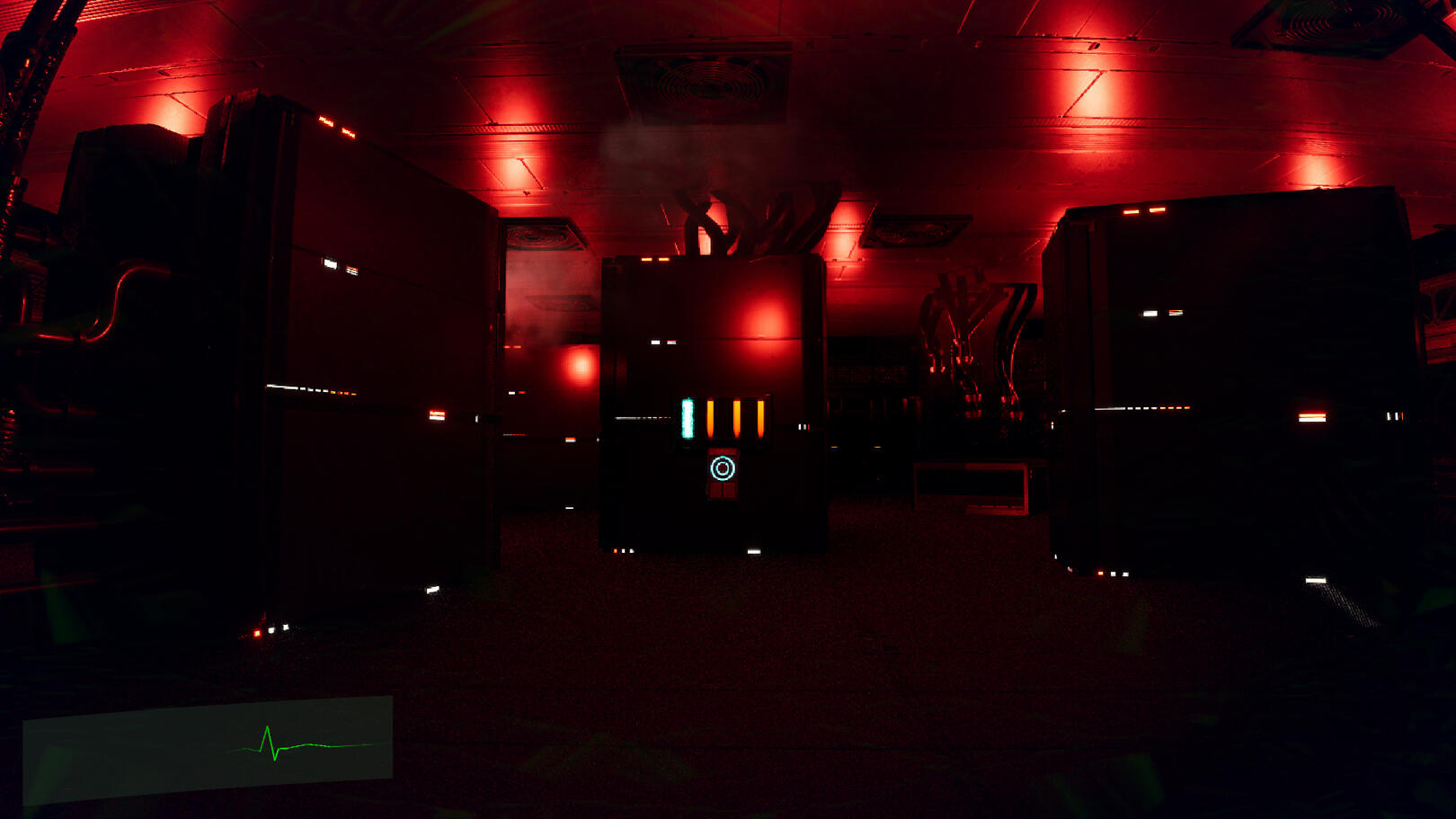
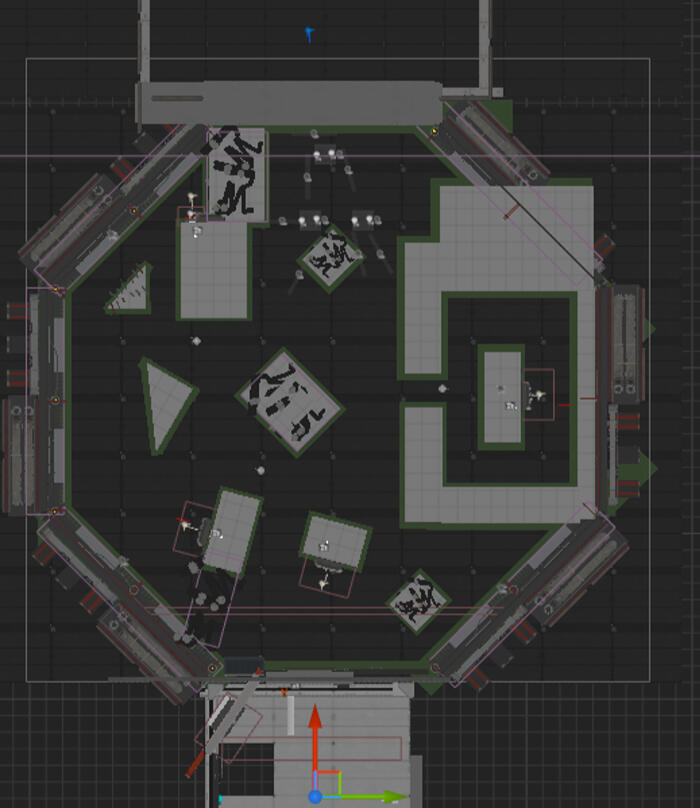
Opening Zero-G Hallway
We got feedback that the opening zero G hallway of the game needed to stand out, we all agreed that it was the “opening of the curtains” to the experience that is our game, and it had to look torn apart, and absolutely mangled. I used the asset packs available to decorate the hallway from scratch, and I modified an existing smoke particle effect to create a new powerable blueprint: BP_PowerableSmokeJet. This helps create the illusion of decompression of the opening room and works with the entire powerable interface.
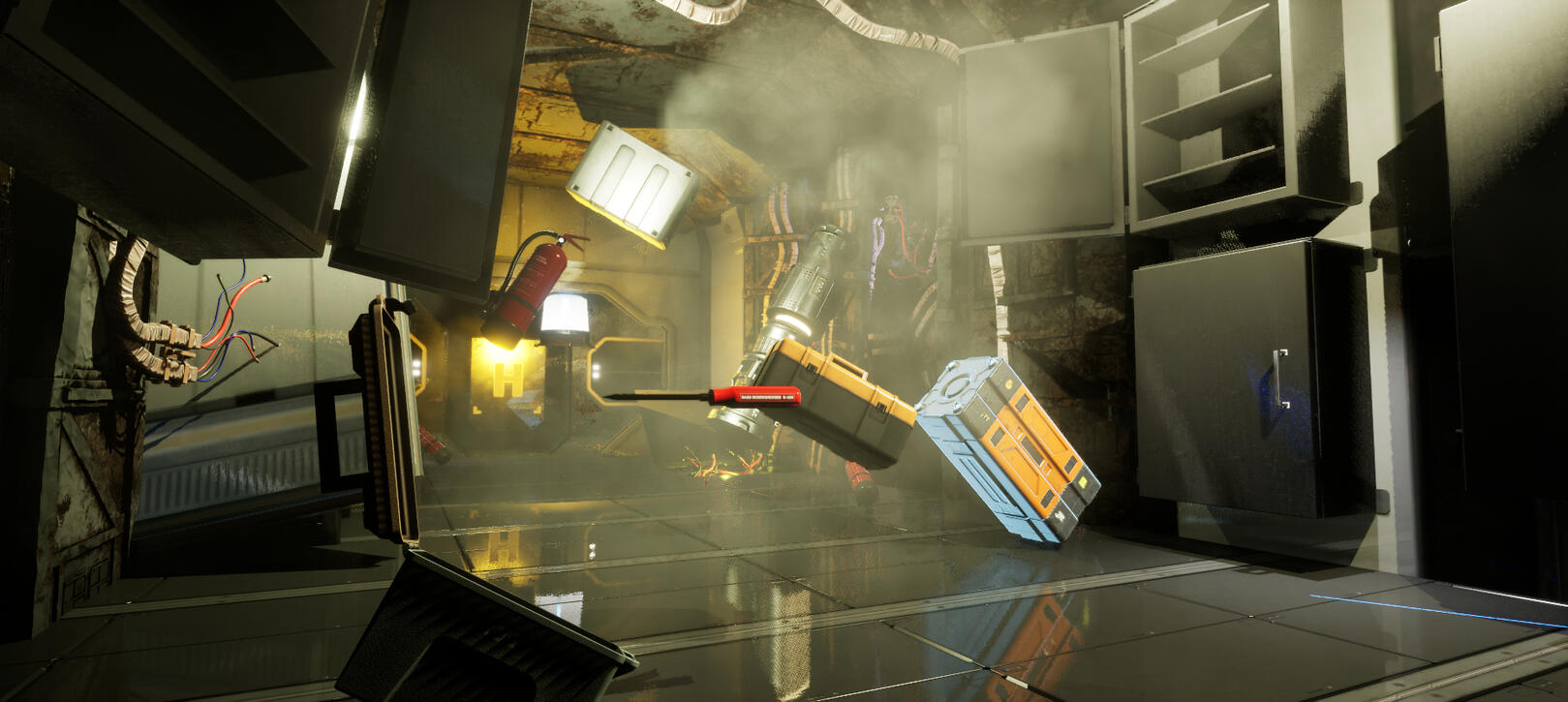
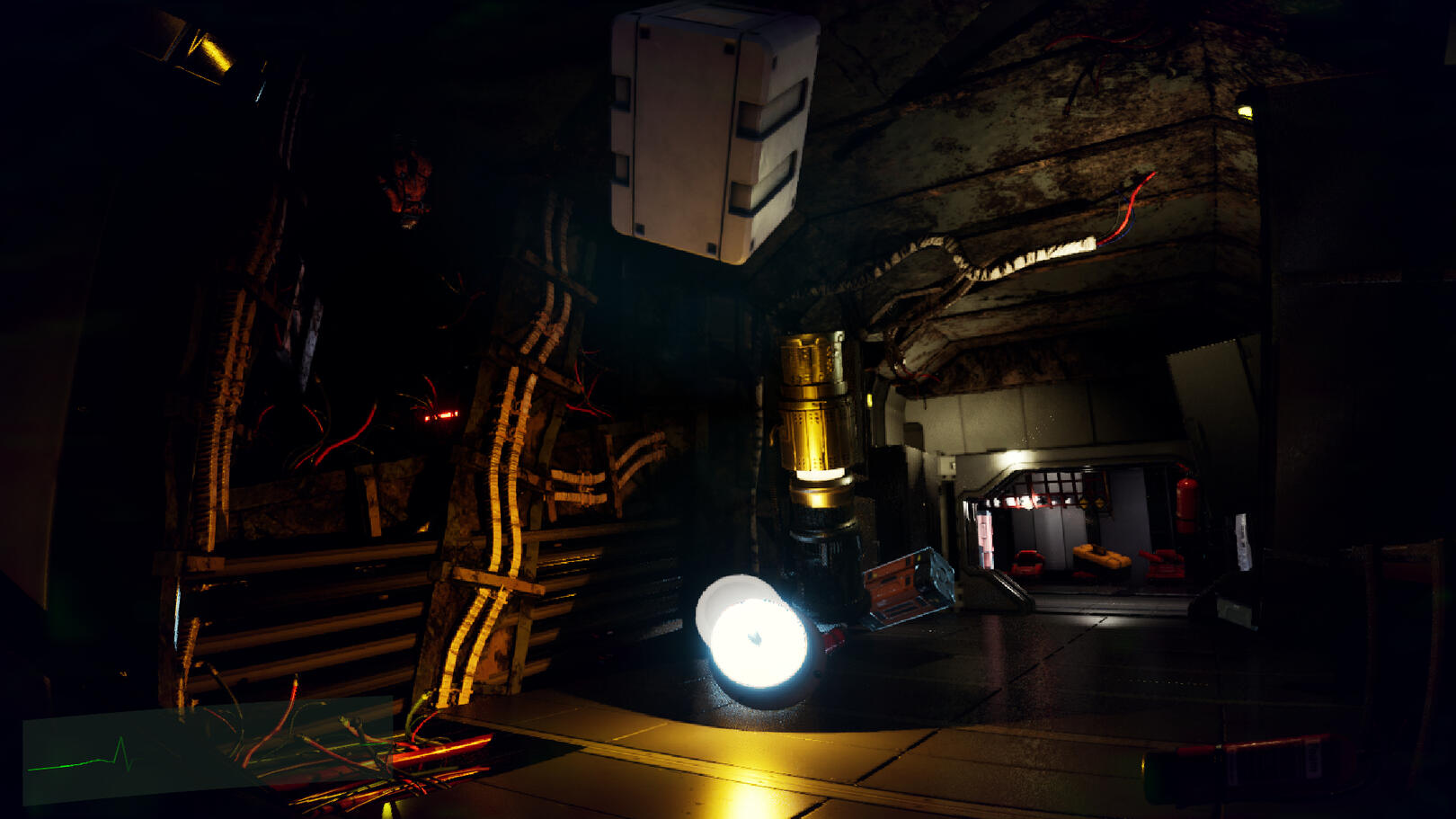
Playtest Reports and Tech Docs
I ran dozens of playtests this semester and even ran some more at the public playtest event and the Bellevue Mall. Play testers ranged from young children to college students, with our intended target audience being teenagers to young adults. I always collected good data from the playtests in the last third of this semester, since our build got consistently more stable. I also made the team’s Playtesting report guidelines.Some other documents I worked on were the AI-MaynardBehaviors.docx it contains Design’s requested AI behavior changes for the tech team early in the semester, in it you will see some comments from some members of the tech team as they were cutting through it. Later I wrote up the DesignToTechSpecDoc.docx, it consists mostly of necessary changes to some tech features after one of our milestones. The last document I worked on was the SettingsMenuSpecDoc.docx, it contains specific requests for tech to implement to the settings menu.
The Trailer
Last year I made the original trailer for the game with the default game audio made by a team member. This semester an all-new trailer was made using custom pre-rendered cinematics that give it a much more professional look! It turned out excellent, but I would like to do a whole new pass to the trailer so that the remaining 2/3rd of it has the same level of quality the opening does.
The Starbright 12's Exterior
I used one of the new asset packs for the new exterior of the ship. In the game’s lore the vessel is a cargo ship, so when I was asset browsing, I was looking for something where function surpassed form. The new exterior is also way more optimized than the previous exterior last semester. That one had well over thousands of individual meshes, creating serious performance issues. The new one is cleaner and gives the ship an iconic exterior.I took inspiration from the Nostromo from the original Alien movie for the overall architecture of the ship. I also made the escape pod blueprint BP_EscapePod that flies around the exterior of the ship at the end of the game, it’s similar to the boss’s code where it just follows a spline.
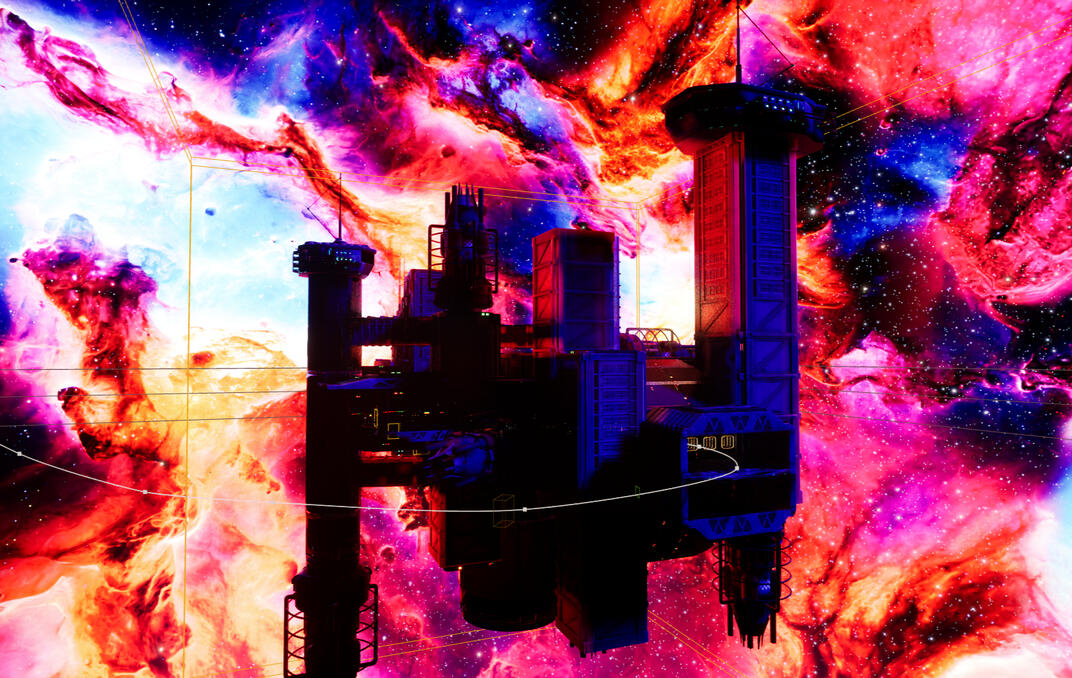

Professional Credits
I made a new widget blueprint WBP_EndCredits for much more professional scrolling credits for the game. It is all extremely organized and can be easily modified since all nodes were organized to align themselves automatically. It is a little over engineered, but it looks so professional and clean it’s worth putting here.
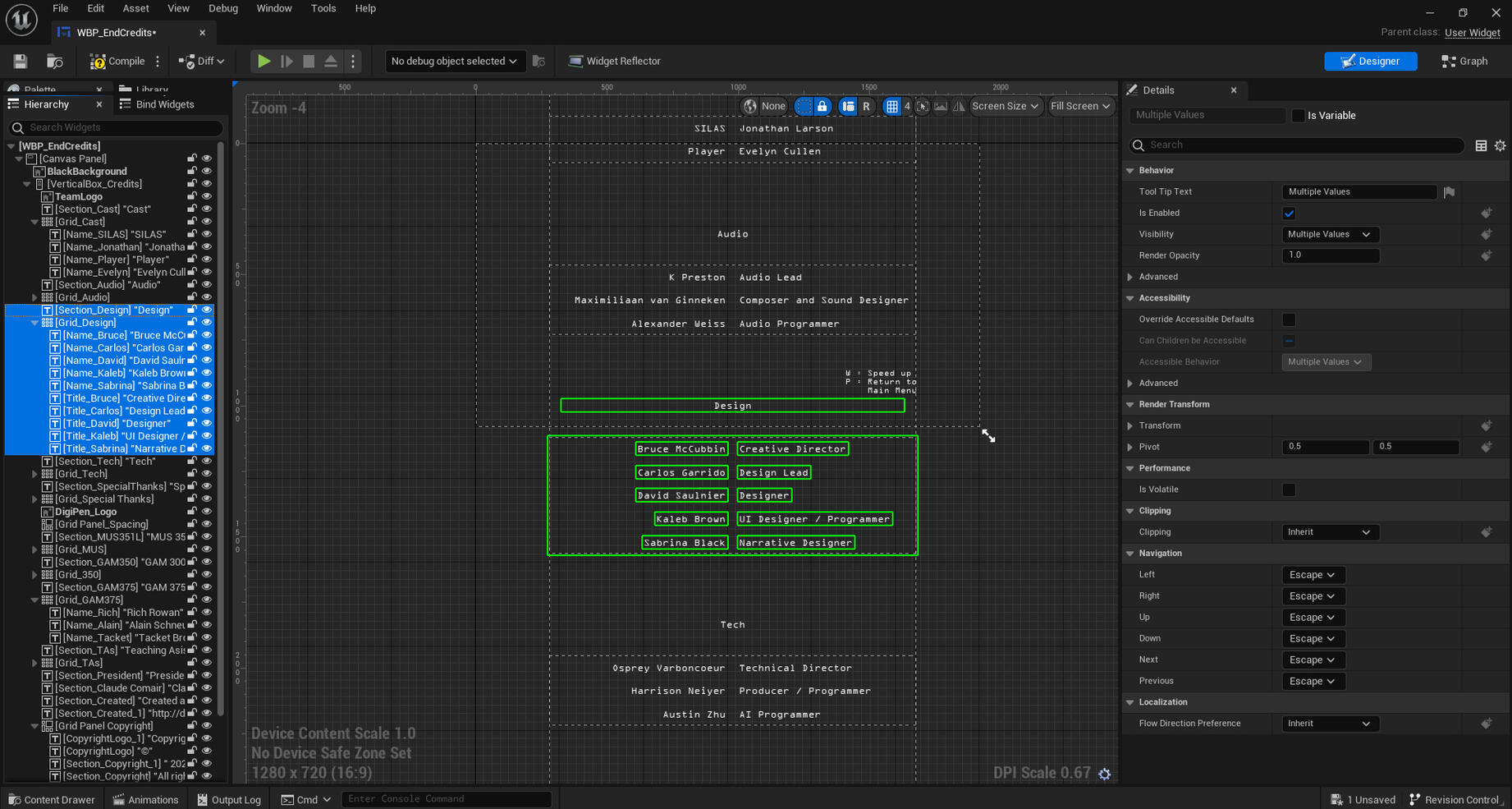
Team Dynamics
Since only 1/3rd of our team consisted of original team members going into 375, most of our new team members were unfamiliar with our workflows. I spent some time every day helping team members where necessary regarding how to use Unreal Engine 5 and GIT. I helped Kaleb, Bruce, and Bri and Harrison occasionally when they ran into rare GIT issues or needed some background on how some of the systems worked.But it's not all sunshine and rainbows, there were conflicts in our team multiple times this semester and I usually found myself being the one mediating these discussions and conflicts so that the team could move forward as a whole. There were some great days and some hard ones, though having strong team communication and trust will always be a priority to continue moving forward.
